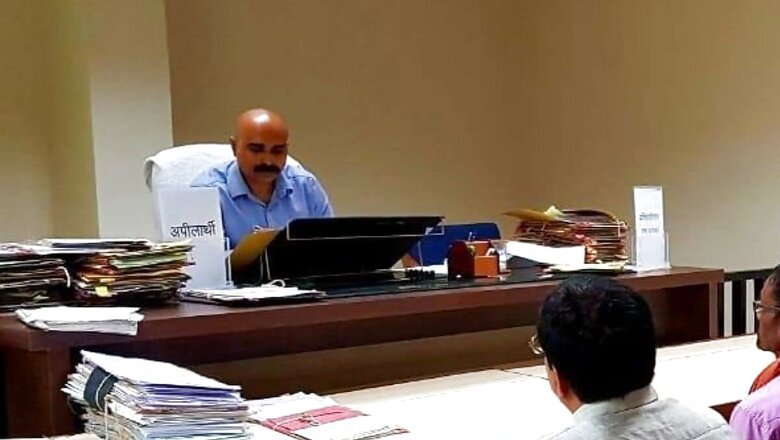
views
A journalist-turned-Information Commissioner at Madhya Pradesh State Information Commission, Rahul Singh, has been quietly revolutionising the way the Right to Information (RTI) Act is used to elicit information by one and all.
Besides regularly penalising those guilty of suppressing information, Singh has been instrumental in using technical means such as emails and WhatsApp to good effect in hearing appeals. For enhancing transparency, he regularly livestreams hearings through Facebook.
Continuing with his efforts to strengthen RTI in different public domains, he has on Monday directed Additional Chief Secretary, General Administration Department, to order all the District Collectors to proactively disclose information related to corruption in panchayats and information related to complete action taken to remove the guilty officers in these cases on district webpages.
Apart from this, Singh has directed for the proactive disclosure of all the information about the recovery of government funds in these cases to the general public.
“The commission believes that the disclosure of the action taken, that was earlier buried in the files for years, will lead to empowerment of transparency and enable anti-corruption measures in the Panchayat Raj system,” said Singh.
Under the MP Panchayat Raj and Village Swaraj Act 1993-94, action is taken under Section 40 and Section 92 against the guilty panchayat officials for embezzlement of government funds. Section 40 has provisions that deal with the removal of office-bearers of Panchayat and Section 92 provides for the recovery of the government money.
Punitive action can take place in just four months under Section 40. But many such cases have been pending for years. It has been observed that at the panchayat level, most often action is confined to files that get buried owing to political pressure, added Singh.
Singh has stated in his order that there is a lack of transparency in the action under Section 40 and Section 92 across Madhya Pradesh which leads to a situation where information about the action taken in these cases is not accessible to the affected persons and general public.
In his decision, Singh has mentioned about the guidelines issued in 2016 by the Additional Chief Secretary Panchayat and Rural Development Department. The guidelines stated that a monthly meeting should be held at the district level and instructions were given to ensure action under Section 40 within a stipulated time period of 4 months. Also, there were instructions to inform the Panchayat Raj Ministry through email every month.
The Additional Chief Secretary also said in his order that if not resolved within four months, then it is a violation of law and disciplinary action should be taken against the officers of the district concerned.
Excerpts from an interview with Rahul Singh.
What will change by making this information public?
The order states that the information sought has two dimensions. One, that the panchayat official against whom action is being taken, also has the right to know on what basis action has been taken against him; secondly, the general public who has the right to know the basis on which embezzlement was done by elected representative and government employee and what was the action taken to recover the government money from them.
How will this boost transparency?
I believe that with this information coming in the public domain, a transparent system of anti-corruption will be enabled. After this order, from each district to every Gram Panchayat, the action related to corruption in panchayats can be seen by any common man on one click.
Has the commission drafted an information format for the government?
Under Section 19, the Information Commission can direct the public authority to release any information in a specific format. I have released a format under which information will be shared on public platforms. There are 6 columns in this format, it contains village / Janapad / district panchayat information. Along with uploading a copy of the action taken under which section, and if FIR has been registered, there is also a column of information about it.
How much time is given to a collector to make necessary arrangements?
Three-month time has been given for district collectors to make arrangements to make the information available in the public domain.
(Singh has also made it clear in the order that after three months if a complaint is made under Section 18 by a person that the above information is not available on the website, then the Commission will hold the District Collector responsible for the violation and the penalty will be imposed by the Commission.)
Whether the action was taken on the basis of any complaint?
Social activist Shivanand Dwivedi of Rewa district tried to get the information about action taken in the Panchayat Department, but this information was not available even after filing an appeal, after which he complained about the case. In that, he talked about the absence of such information in Rewa district and other districts as well.
Read all the Latest News, Breaking News and Coronavirus News here

















Comments
0 comment